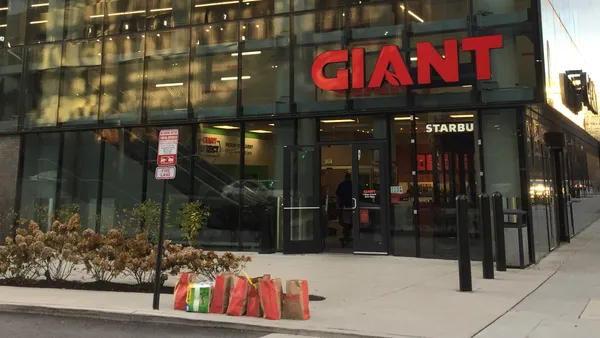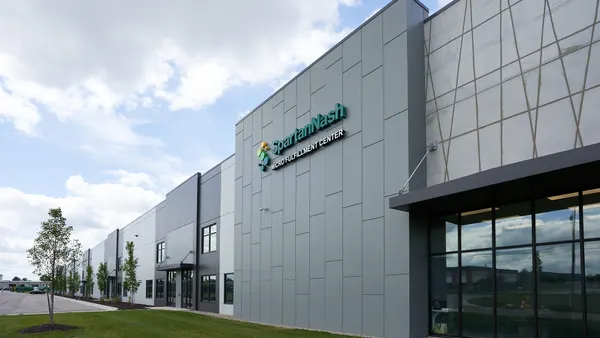Dive Brief:
- Walmart's new warehouse in Shafter, California, will be a tech-enabled fresh and frozen grocery facility that stores and retrieves items and loads pallets automatically, according to a company blog post. The facility will support 200 area stores.
- The new facility, set to open in 2020, will be able to process 40% more cases than a traditional perishable distribution center. Associates will use technology from vendor Witron to load pallets faster, denser and safer, while protecting delicate fresh food items through a process that resembles a game of Tetris.
- In this tech-enabled environment, Walmart says it will need more STEM-educated workers. The company is opening a "supply chain academy" to further train existing employees, according to Yahoo Finance.
Dive Insight:
During its investors' conference this week, Walmart executives said the company would continue to automate processes that are repeatable and able to be standardized. In August, the retailer kicked off a pilot with Alert Innovations to automate online order assembly. Walmart has also installed robots in a handful of stores that glide up and down aisles checking inventory.
This latest automation news continues that drive towards greater efficiency. Walmart has 42 perishable distribution centers across the country, and all of them rely on getting products in and out the door quickly and with minimal spoilage. By boosting productivity while bringing down costs, Walmart should achieve savings that it can pass along to consumers — thus continuing to drive down prices, while deepening misery for its competitors.
There are legitimate concerns from workers over how automation will impact staffing levels, but Walmart has positioned the trend as one that will enhance employees' value rather than replace them. Case in point: The drive to provide STEM training for its warehouse workers. It has long been forecasted that the supply chain worker of the future will need technical skills previously unnecessary. The news from Walmart is one of the first moves by a major retailer to begin preparations for that eventuality, since this new warehouse will be able to do its own "heavy-lifting."
"The technology builds pallets based on data from the business. This creates better pallets that include more cubic feet, reducing transportation costs and damaged items," Walmart spokesperson Michelle Malashock told Supply Chain Dive in an email.
"Today, our associates drive through the aisles and manually pick the items," Malashock wrote. "Rather than going to work, the technology brings the work to the associate and can build pallets twice as fast. When the freight arrives at the store, it will be easier for associates to unload and stock the shelves, ultimately leading to items moving from truck to shelves faster."
Malashock said the hundreds of new hires in the Shafter warehouse will require skills ranging from "computer literacy to data analytics to mechanical engineering skills."
The company's existing grocery facilities have between 350 and 700 workers each. Tim Cooper, senior vice president of logistics, west, at Walmart, told Yahoo Finance that its existing workforce may even possess some of these skills that they are not using in their current positions. He explained that up-skilling internally would be the priority in staffing the California warehouse.












